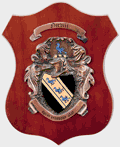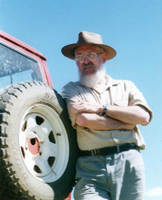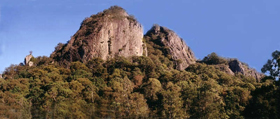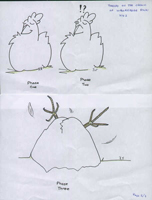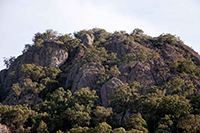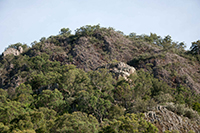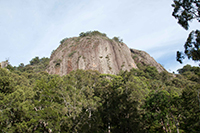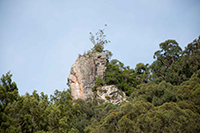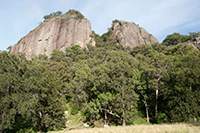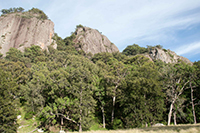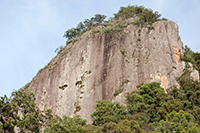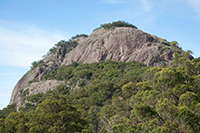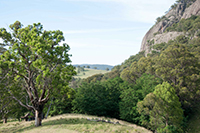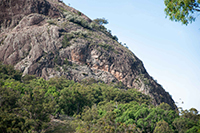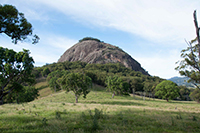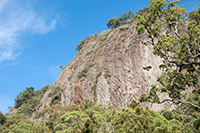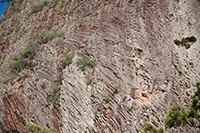“Norville” and Rock Dhu are situated in a valley NE of Murrurundi in the Upper Hunter Valley of New South Wales.
The landforms in the area are ancient and are the product of extinct volcanic activity and also contain sedimentary rock formations laid down over the ages.
There is a thick layer of topsoil, especially on the alluvial flats around Warlands Creek, sometimes up to 10m deep! This rich soil results from erosion of the basalts of the eastern Liverpool Range lava fields capping the surrounding mountains. This topsoil of basalt clay loam supports farming and grazing activity, as well as countless native grasses, ground-covers, flowers, shrubs and trees.
Father Paul Hanbridge, a Capuchin Monk who assisted in establishing a Hermitage near Murrurundi, has been invaluable in identifying types of rocks and rock formations, and also in labelling various specimens collected in the area.
Wallabadah Rocks rise over 300m above the creek and consist of quartz rhyolite.
How Did It Get Its Name?
In the early days when people travelled from down south to the plains they either crossed the range at what is now known as Murrurundi Gap or the gap behind the Rock. Another road went over Crawney Pass or others out via Merriwa.
If we imagine the talk of such people ... a conversation might go like this. Someone asks, ‘Which road are you taking?’ Reply, ‘The road that goes by the big rock this side of Wallabadah.’ As the years go by Evolution takes a part and it isn’t hard to imagine the English language becoming ‘Wallabadah Rock’. Put another way, ‘it’s the rock you pass on the way to Wallabadah’
I know no better possible explanation
